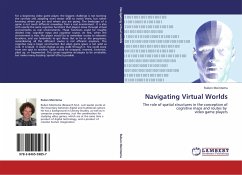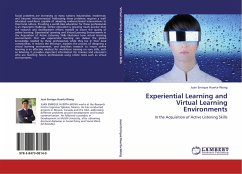
Navigating Virtual Worlds
The role of spatial structures in the conception of cognitive maps and routes by video game players
Versandkostenfrei!
Versandfertig in 6-10 Tagen
39,99 €
inkl. MwSt.

PAYBACK Punkte
20 °P sammeln!
For a beginning video game player, the biggest challenge is not learning the controls and adapting one's motor skills to match them, but rather knowing where you are and where you are going. The landscape of a game is not much different nowadays from a real environment. It is also with exactly the same cognitive functions that players move through virtual environments as real environments. These functions could be roughly divided into: cognitive maps and cognitive routes. At first, when the environment is new, the player would try to remember routes to relevants locations, and use landmarks to...
For a beginning video game player, the biggest challenge is not learning the controls and adapting one's motor skills to match them, but rather knowing where you are and where you are going. The landscape of a game is not much different nowadays from a real environment. It is also with exactly the same cognitive functions that players move through virtual environments as real environments. These functions could be roughly divided into: cognitive maps and cognitive routes. At first, when the environment is new, the player would try to remember routes to relevants locations, and use landmarks to get there. But as he or she progresses, remembering all the different routes is not efficient anymore. The cognitive map is begin constructed. But video game space is not solid as rock. It is liquid. It could change as you wallk through it. You could warp from one spot to another. Space could be wrapped, inverted, Escherian, piled up, or fragmented. This causes cognitive strategies to be unreliable, but makes many dazzling 'spatial' effects possible.












